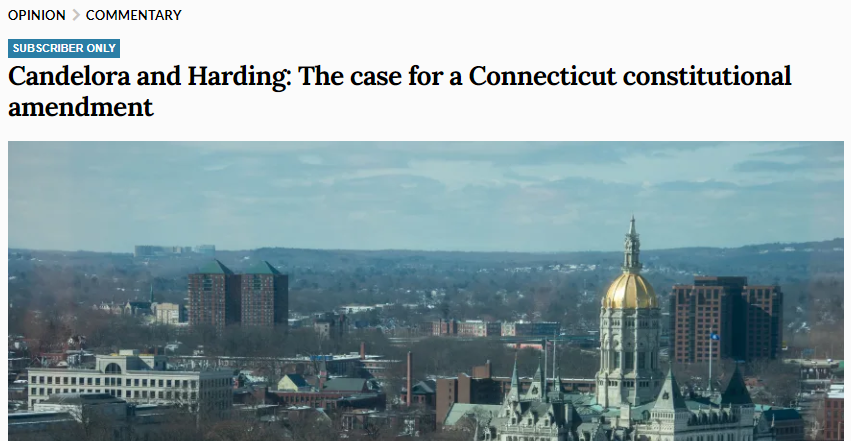Omitted from Gov. Lamont’s 35-minute State of the State budget address Feb. 7 was a two-word phrase that hangs over every important issue and initiative that will arise in the critical short session of the General Assembly this year.
“Fiscal guardrails,’’ may not mean much to the public outside of Hartford, but it casts a long shadow over the business in the Capitol over the next three months. If on May 9 we can look back and see that our elected leaders preserved our budgetary restraints and chose to live within our means, then this session will have been a success.
Republicans have doubled down in support of the fiscal guardrails they have long supported and that were finally adopted in 2017 into state law in overwhelmingly bipartisan fashion. We have proposed codifying the state’s existing budgetary constraints — spending and borrowing caps, and use of excess revenue restrictions, known as the volatility cap — into our State Constitution. This will further safeguard Connecticut’s fiscal health from economic downturns and wild spending sprees and concomitant tax hikes that shoved our state to the brink of fiscal disaster in the past.
Gov. Lamont repeatedly says how much better off we are as a state compared to the dark old days pre-2017 when Connecticut faced deficits and the prospect of tax hikes to cure our fiscal malaise. It is the so-called guardrails that limit how much we can spend and tax, but which also allow us to provide much needed resources to the most vulnerable who need help most. They shift long-term, crushing interest costs to budget line items that directly help people.
The guardrails have allowed our state to pay down on our massive fiscal liabilities, including more than $8 billion in the last four years. Gov Lamont wants to cut down our long-term debt by another $500 million in this budget year alone. We have the money because of the spending curbs, so good for him.
The spending and borrowing limits have also allowed Connecticut’s government to provide middle-income, working-class families millions in a tax relief. Last year, Republicans and Democrats came together on the two-year budget and cut taxes by $610 million.
long-term debt, middle-income, working-class families, Republicans and Democrats
But the early session chatter has some of our Democrat colleagues displaying a keen interest in getting around the fiscal limits and finding clever ways of spending more money than currently allowed. Any such legislative legerdemain would be an unwarranted assault to circumvent the caps.
Today, under the governor’s proposed budget, we are just $11 million under the clear and concise spending cap. Meanwhile, the heads of the Appropriations Committee, the chief “spending’’ panel in Hartford, are sitting on roughly $600 million in known spending requests from various agencies, non-profits and General Assembly members.
Connecticut’s government has shown a tendency to go back on its word and not hold up its part of the bargain when it comes to honoring the will of the people. Originally the spending cap was put forth in 1991 during the income tax fight and was critical in getting that initiative through an exhausted House and Senate – barely.
The spending cap idea was put to Connecticut voters a year later as a constitutional amendment and 81 percent of the electorate supported it. Question 2, as it appeared in the voting booths that year, received 829,868 votes, more than any other single initiative or candidate for office in Connecticut history. Yet, the Democratic-led House and Senate failed for a generation, 25 years actually, to specifically define what a spending cap meant. So, we spent and raised taxes until the composition of the General Assembly tilted more toward Republicans and made it politically impossible to continue the tax and spend ways. The guardrails were finally adopted in October of 2017, four months after the budget was due.
We will see where this debate goes this year. But a year ago a critical voice in Hartford perhaps said it best:
“We owe it to our children and grandchildren to continue the legacy of the 2017 bipartisan budget and be the shining example of what a state or country can be when we come together, compromise and do the right thing,’’ current House Speaker Matthew Ritter wrote in the Hartford Courant on Feb. 1, 2023.
Amen.
State Rep. Vincent J. Candelora of North Branford is the House Republican Leader. State Senator Stephen Harding of Brookfield is the Senate Republican Leader.


